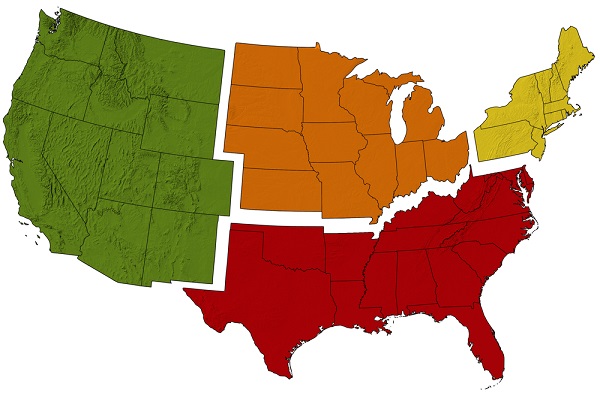 For more than 35 years, Maryland has operated the nation's only all-payer hospital rate regulation program. Is that why its health care costs are so low? (Image: Shutterstock)
For more than 35 years, Maryland has operated the nation's only all-payer hospital rate regulation program. Is that why its health care costs are so low? (Image: Shutterstock)
Although price is the driver of both higher and lower health care costs in some geographies, utilization makes the difference in overall costs in other states, according to the third annual benchmark report, “Healthcare Affordability — Data is the Spark, Collaboration is the Fuel,” by the Network for Regional Healthcare Improvement, a national organization representing more than 30 member regional health improvement collaboratives.
In each of the three benchmark reports, Maryland had the lowest cost of the regions. In the most recent year, the total cost index varied from 20 percent below the benchmark for Maryland, to 19 percent above the benchmark for Colorado, the highest-cost region.
Related: Employee benefits vary by region–here's what's popular where you are
“The data shuts down anecdotal conversations and opens peoples' eyes,” says Jonathan Mathieu, vice president of data and delivery at the Center for Improving Value in Health Care (CIVHC), the collaborative serving Colorado.
CIVHC worked with legislators to help inform the development of several bills aimed at increasing health care transparency in the state, according to the report. A key piece of legislation passed that requires every freestanding outpatient facility — freestanding emergency departments, urgent care centers, imaging centers and others — to bill using its own unique national provider identifier.
“This change will give CIVHC the ability to identify these various facilities in its dataset rather than have the care provided by those facilities look as though it were provided by a hospital or another facility,” the authors write. “The additional data will allow CIVHC to conduct valuable analyses on the care, and the cost of care, delivered by these facilities.”
Ben Steffen, Executive Director of the Maryland Health Care Commission, told the report's authors that the results showing Maryland as the lowest cost are not surprising. For more than 35 years, Maryland has operated the nation's only all-payer hospital rate regulation program, and in 2014, the program was expanded.
Under the new model, the state agreed to limit all-payer per capita hospital growth, including inpatient and outpatient care, to 3.58 percent. In addition, Maryland agreed to limit annual Medicare per capita hospital cost growth to a rate lower than the national annual per capita growth rate per year for 2015-2018. This year, the program was expanded to physicians and nursing homes and extended until 2023.
The total cost of care methodology is different from the methodology used by the Centers for Medicare and Medicaid Services, Steffen said. However, the results from the project may point to the all-payer model having a positive impact for the commercially-insured as well.
Utilization rates impacting health care costs also vary across states, according to the report. For example, in all three sets of results, Oregon prices, outside of pharmacy costs, have consistently been higher than the benchmark while resource use has been lower. In contrast, in St. Louis, prices have consistently been shown to be lower than other regions. However, resource use in St. Louis has consistently been higher, ultimately driving up health care costs.
“The cost of living here is so much more reasonable than a lot of places so you wouldn't expect our costs to be as high, but the other side of cost is utilization,” Louise Probst, executive director of the Midwest Health Initiative, told the authors. “In St. Louis, we tend to have a slightly older population and higher rates of utilization than other markets.”
MHI invited employers to join representatives of the region's leading provider groups for a joint discussion. At the event, MHI shared how each of the groups performed on the total cost of care, utilization and quality measures compared to each other and a regional benchmark.
“Everybody can learn together.” Probst said. “Only by all stakeholders coming together to discuss trusted information can we deliver on the promise of higher-value, safer, and more affordable healthcare in our community.”
Read more:
© 2025 ALM Global, LLC, All Rights Reserved. Request academic re-use from www.copyright.com. All other uses, submit a request to [email protected]. For more information visit Asset & Logo Licensing.








